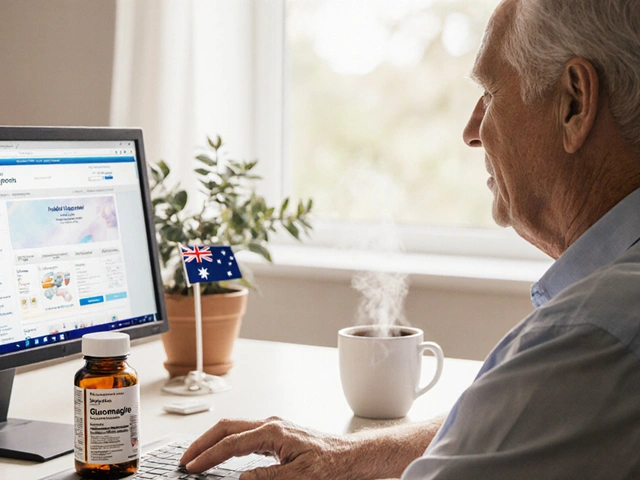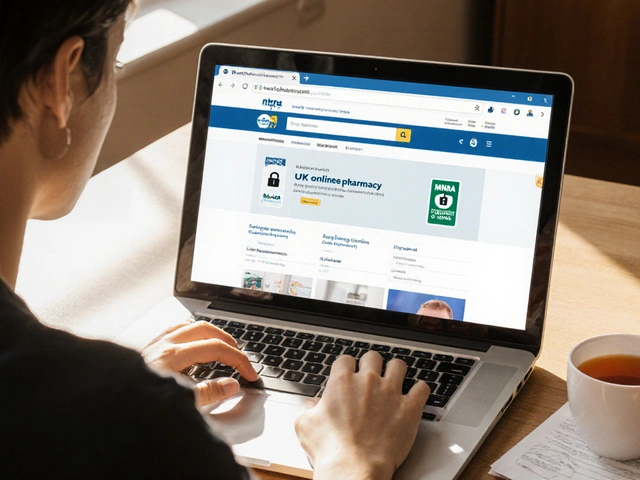Few pills spark both relief and dread among patients like Coumadin. This little tablet, famous for its power to prevent stroke and blood clots, comes with a reputation for being both a lifesaver and a lifestyle game-changer. One minute, you’re feeling protected from dangerous heart complications; the next, you’re bogged down by grocery lists of food restrictions, constant blood checks, and the nagging fear of a bump turning into a crisis. But why is Coumadin, officially known as warfarin, still prescribed so much—long after newer blood thinners hit the shelves? It’s got an interesting history, more plotting twists than you’d expect, and more impact on daily life than most folks realize. Understanding Coumadin means seeing the whole picture—not just the science, but the tug-of-war that’s played out in households and clinics for decades.
The Science Behind Coumadin—and Why It Still Matters
Warfarin wasn't always a human medicine. Back in the 1920s, cows in the American Midwest started dying after eating spoiled sweet clover. Scientists finally connected the dots: the clover was loaded with a natural anticoagulant byproduct. Fast forward to 1948, and after some pretty wild stories—including an attempted suicide that failed because warfarin works over days, not hours—it became a landmark medicine for humans. Coumadin, as brand-name warfarin, works by blocking the action of vitamin K, an ingredient your liver needs to make clotting factors. If you have atrial fibrillation, artificial heart valves, or a history of deep vein thrombosis or pulmonary embolism, preventing clots is more than just important—it’s lifesaving.
Despite its age, Coumadin still hits the script pad for millions worldwide. Why? It’s dirt cheap, incredibly well-studied, and doctors know exactly what to expect from it. Newer meds like apixaban, rivaroxaban, and dabigatran (with names sounding like Star Wars planets) win points for convenience—fewer food issuess; no regular lab draws. But when you need extra control (like weird kidney or liver issues or extreme weight changes), Coumadin keeps its crown. Plus, while every medication has a bleeding risk, warfarin’s got a reversal agent: vitamin K—an antidote that turns things around fast in emergencies.
This med isn’t a one-size-fits-all pill. Its effect is measured using something called the INR (International Normalized Ratio), which shows how fast or slow your blood clots compared to normal. The sweet spot? Usually between 2.0 and 3.0 for most conditions, but heart valve folks might need slightly higher. Doctors and nurses love to nerd out over these numbers. Tiny changes in your diet or new medicines can swing your INR faster than a kid on a trampoline. Grapefruit? Risky. A binge on kale? Better call your provider. Antibiotics, vitamins, herbal teas—nearly everything in your pantry seems to want a piece of your INR. That’s why Coumadin folks get poked by the lab so often—to tweak dosages and dodge serious complications.
Let’s bust a myth here: warfarin isn’t rat poison. Okay, so it is—at much higher, unregulated doses—but so are lots of things. The flip side: messing around with your dose or skipping pills can get risky quick. Bleeding is the #1 scare, but every rare story of a disastrous clot reminds us why the juggling act never stops. The trick is respecting the drug’s power, not fearing it.
Why not just switch everyone to the new stuff? Some insurance companies won’t pay for pricier newer blood thinners unless there’s a good reason, and Coumadin’s tried-and-true status keeps it going, especially in older folks or folks with funky medical histories. Still, nearly every expert keeps their eye on new research. As Dr. John Fanikos, a leading hospital pharmacist, puts it:
“We rely on warfarin’s history and reversibility, but patient safety always leads the dance. The more tailored our monitoring, the better the outcomes.”The bottom line? Coumadin’s not going anywhere soon.

Living With Coumadin: Real-Life Tips and Advice
If you ask anyone who’s been on Coumadin for years, they’ll have stories—funny, frustrating, or both. Like the time they learned the hard way that cranberry juice could mess with their INR, or the family barbecue where a plate of spinach did more than just satisfy hunger. Adapting to Coumadin isn’t just about swallowing a pill—it’s about building habits, staying curious, and talking to your healthcare team like you’re all on the same side of the table.
Let’s start with diet. Vitamin K runs the show here, and it’s mainly hiding out in green leafy vegetables. Spinach, kale, collard greens—they all pack plenty. The trick? Consistency, not complete avoidance. You don’t have to fear your salad bowl; just eat about the same amount each week. Sudden changes—like going plant-based overnight or cutting out green veggies totally—can make your INR swing wider than a barn door on a windy day. Keep a food diary for a couple weeks if you’re struggling to spot patterns. It helps your doctor quickly pinpoint why your INR might be jumpy.
Blood testing is the cornerstone of Coumadin safety. Labs can be a hassle, but they’re like pit stops in a race—getting you the right dose for the next lap. These days, some clinics use fingerstick machines for quick INR checks. Others offer home monitoring with special devices you use yourself and call in the results. Check with your insurance; sometimes, the option is closer than you think. And if you’re keeping a smartphone calendar, set reminders for tests so you don’t miss them. What happens if you forget a dose? Take it as soon as you remember, but don’t double up or “catch up” later. Missing a few doses? Contact your clinic—don't wing it.
Coumadin’s interactions go far beyond food. Lots of prescription and over-the-counter medicines can trigger changes—especially antibiotics, anti-seizure pills, and even some pain relievers. Dangerous bleeding is more likely if you mix Coumadin with aspirin, NSAIDs (like ibuprofen), or certain herbal supplements. Always double-check with your pharmacist before starting anything new—yes, even those vitamin blends from your favorite health food store. No shame in carrying a list of your meds with you (old-school paper or fancy phone app; your call). Emergency medical bracelets or smartphone emergency info—total lifesavers if you’re ever knocked unconscious.
Daily life brings its own Coumadin curveballs. A leisurely bike ride? Maybe slap on some knee pads. Gardening? Gloves are your friend. Bruising more easily is a classic side effect—sometimes just a tap on a table edge leaves a wicked purple spot. Nosebleeds, bleeding gums, and longer bathroom time due to slow-healing cuts can happen, too. When to worry? If the bleeding won’t stop, feels heavy, or is happening in weird places (like your urine or stool), call your doctor or head to the ER. Keep your provider’s after-hours line on speed dial, just in case.
Traveling with Coumadin? Stuff plenty of pills in your carry-on, pack a recent INR result, and scout out local labs if you’re leaving town for more than a week. Different places handle generic warfarin pills with different colors or strengths, so don’t assume you can just pick some up at any pharmacy. Taking the correct dose is essential, so double-check the number of milligrams stamped on each tablet. And don’t be afraid to ask for a pill organizer—they’re cheap and wipe out a lot of stress.
Here’s a quick cheat sheet on Coumadin pro tips:
- Eat similar amounts of vitamin K-rich foods each week.
- Keep a consistent schedule for blood tests and act fast if you miss a dose.
- Ask before you add new meds, vitamins, or herbal blends—interactions are no joke.
- Stock up on safety gear if you do activities where cuts or falls are possible.
- Carry your medication and dosage info when away from home.
- Always report unexpected bruising or bleeding to your healthcare provider.
No one loves being told their life needs “management,” but honestly, Coumadin patients get a crash course in how their bodies react to everything—right down to the salad bar and Tylenol bottle. That self-awareness often leads to healthier habits across the board.

The Big Questions: What the Future Holds for Coumadin
The last two decades have seen a burst of new anticoagulant meds, and plenty of folks are curious: is Coumadin on its way out? Not so fast. There’s a reason the word “transition” comes up in most Coumadin clinic visits rather than “switch.” Doctors weigh lots of factors—cost, other health conditions, kidney and liver function, surgical plans, pregnancy risks, and, yes, patient preferences. Even the best new drugs lack the long-term “been there, done that” data that Coumadin has, especially for certain rare clotting disorders or heart valve types.
Lower-cost generics have made switching from Coumadin to new blood thinners easier in some cases—something insurance companies are pushing more often. But in rural settings, or for patients with tight budgets, warfarin can keep them safely covered at just a few bucks a month. Plus, the ability to “reverse” warfarin with vitamin K is a tremendous advantage in emergencies, where newer drugs require costly, sometimes hard-to-find reversal agents. And there’s trust in familiarity. Some people feel anxious on brand-new medications. If Coumadin keeps them safe, and they’re dialed into their habits, switching isn’t always the best idea.
Researchers keep hunting for the sweet spot: a blood thinner that doesn’t need food juggling, doesn’t bleed you dry in an accident, and actually prevents clots every time. Personalized medicine, using genetics to tailor drug choices and monitor risks, could soon make the process smoother. For now, regular INR checks and careful dose tweaks are still the bread and butter. Some labs are starting to offer genetic tests that help predict how a patient will respond to Coumadin, giving even more precise dosing from the start. That’s especially handy for people prone to stubbornly high or low INRs despite perfect habits.
Education efforts have picked up steam, too. Lots of clinics now run “Coumadin classes” for newly diagnosed patients, covering everything from salad serving sizes to the weird stuff in over-the-counter cough syrup. The hope is that the more people understand how Coumadin dances with their daily life, the fewer accidents or scares they’ll have. Home monitoring technology has made it easier to spot dangerous INR levels more quickly—sometimes with just a finger prick and a phone call. These shifts give people freedom while keeping the safety net tight.
It doesn’t always get highlighted, but Coumadin has stuck around for one simple reason: when used right, it works. It slashes the risk of deadly strokes, clots in the legs or lungs, and certain heart-related problems. People on Coumadin have gone on to run marathons, travel the world, and watch grandkids grow up, all while keeping an eye on their salad portions and pill boxes. That’s not nothing. Sure, the next decade will bring more options and probably fewer headaches, but as of now, Coumadin’s story is far from finished. It’s a medicine born on the prairie, tested by generals and presidents, and carried forward by everyday folks who just want to stay healthy—and maybe enjoy a little spinach on the side.



 Medications
Medications





Naomi Ho
July 18, 2025 AT 13:00Great post! Coumadin really is a classic blood thinner that has helped countless people over the years. One thing I always emphasize to patients is how important consistent diet is because foods high in vitamin K can impact how Coumadin works. It’s not just about taking the pills; it’s managing your lifestyle around it. Also, regular blood tests to check INR levels are crucial to ensure the medication remains effective and safe. I've seen many patients really thrive when they stay on top of these factors. Does anyone here have tips on managing diet while on Coumadin?
Suzanne Podany
July 24, 2025 AT 05:25This is such an informative read, especially for those new to Coumadin. I appreciate how the article breaks down myths—it really helps demystify the medication. I’d add that community support groups can be a wonderful part of managing life with Coumadin, helping people share their experiences and coping strategies. Plus, doctors and pharmacists play key roles in educating patients, which this guide highlights well. Always remember, you’re not alone on this journey, and connecting with others can make a huge difference.
Christopher Stanford
July 30, 2025 AT 20:01Well, I gotta say, while Coumadin has been around forever, it sure isn't without its headaches. For one thing, the constant blood tests can be a real pain, not to mention the way it messes with your food choices. I saw a lot of docs rushing to newer anticoagulants which require less monitoring. And honestly, for some, Coumadin’s side effects feel pretty harsh. Anyone else feel like the hype around it sometimes ignores the downsides?
Steve Ellis
July 30, 2025 AT 20:18I actually found Coumadin to be a lifesaver during a tough time. Yes, it's demanding with monitoring and diet, but knowing it helps prevent strokes and clots made the effort worthwhile. The article touches on real stories, and I think that personal angle is essential because it shows the human side behind the medication. Managing Coumadin is definitely a team effort involving doctors, patients, and families. How has everyone else handled the social and emotional aspects?
Jennifer Brenko
July 31, 2025 AT 07:33As someone from Canada, I can attest that Coumadin remains a frontline anticoagulant in many regions despite the emergence of direct oral anticoagulants. The cost-effectiveness makes it a preferred choice in public healthcare systems. However, this does come with the responsibility of intensive monitoring, which can burden some patients. I would be interested in seeing more discussion addressing newer alternatives and how they compare in terms of efficacy and patient quality of life. The article is thorough yet could benefit from broadening the scope internationally.
Harold Godínez
August 2, 2025 AT 02:41I'm really impressed with the clarity in breaking down the complexities of Coumadin. I sometimes see folks confused about why the medication requires so much attention. Honestly, understanding could reduce anxiety. Clarifying how foods and other medications interact with warfarin is key. Great tip about separating myths from facts because misinformation can be dangerous. Did anyone else learn something new here about daily life adjustments needed?
Sunil Kamle
August 2, 2025 AT 19:00Indeed, Coumadin’s place in therapy is iconic but not without its quirks. I have often felt that the highly formal approach to educating patients might come across as daunting rather than encouraging. Sarcastically speaking, it’s almost as if the fear of bleeding overshadows the medication’s undeniable benefits. Nonetheless, an energetic push towards patient empowerment and optimism is necessary to help folks maintain adherence and manage side effects. Any thoughts on more effective communication strategies?
Shana Shapiro '19
August 5, 2025 AT 06:23This article really struck a chord with me. Being on Coumadin can feel overwhelming, especially at first, with all the rules about food and regular checks. I've found that having a gentle routine and support system is invaluable. Emotionally, it can be draining, but knowing the risks it prevents helps me stay strong. The post’s blend of factual information and stories makes it easier to relate to. I wonder if others have noticed an emotional rollercoaster while adjusting?
Adrian Hernandez
August 5, 2025 AT 20:53C'mon, we all know Coumadin's a slippery slope. There's always the hidden risks they don't tell you and the possibility that pharmaceutical companies push it way too much. How many times have we heard about bleeding complications or interactions that get downplayed? It feels like patients are guinea pigs sometimes. The article is nice and polished, but I smell something fishy in the background. Anyone else doubtful about this?
duncan hines
August 11, 2025 AT 15:21Totally agree with the skepticism here. Let me add that even the supposedly minor side effects can escalate, and some docs don't always communicate the full picture clearly. Typos aside, I mean that literally—sometimes the paperwork and instructions themselves are confusing with errors. That doesn’t inspire confidence in patient safety. The drama around balancing Coumadin doses is real and can be exhausting. Does anyone have stories about managing unexpected complications?
Chris Meredith
August 16, 2025 AT 01:56Interesting points raised here, I must say. From a clinical perspective, warfarin pharmacodynamics and its narrow therapeutic window remain a challenge. The multi-factorial influences including diet, genetics, comorbidities, and drug-drug interactions create a web of complexity that demands vigilance. It's not just about taking a pill; it's a holistic management scenario requiring continuous patient engagement. The article does well in opening the discourse, but we should keep pushing for advanced patient education and technology-assisted monitoring tools. Curious how others handle the balance between therapy effectiveness and lifestyle constraints?